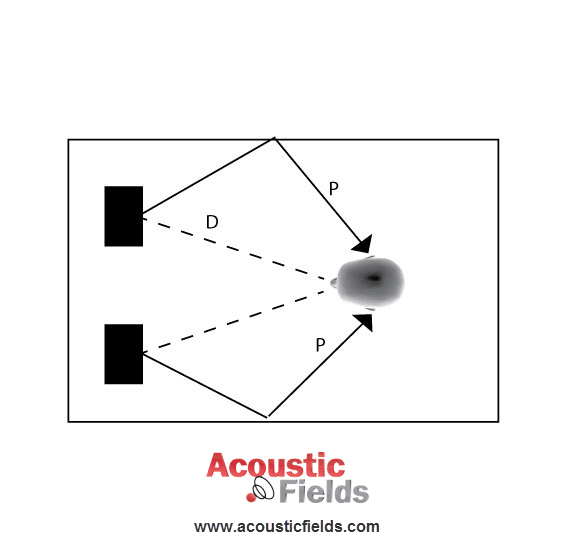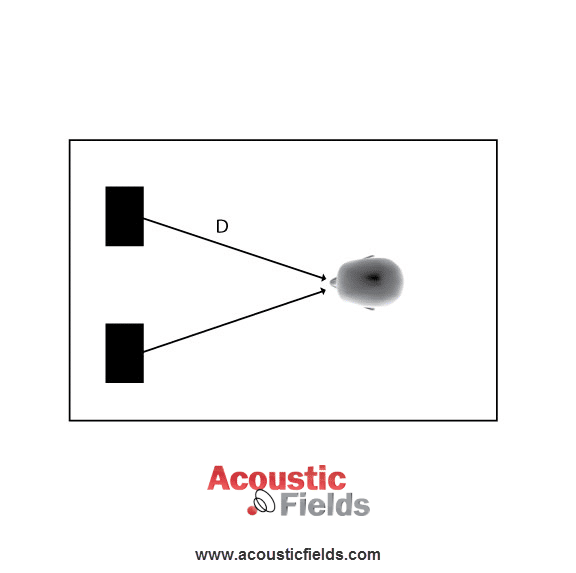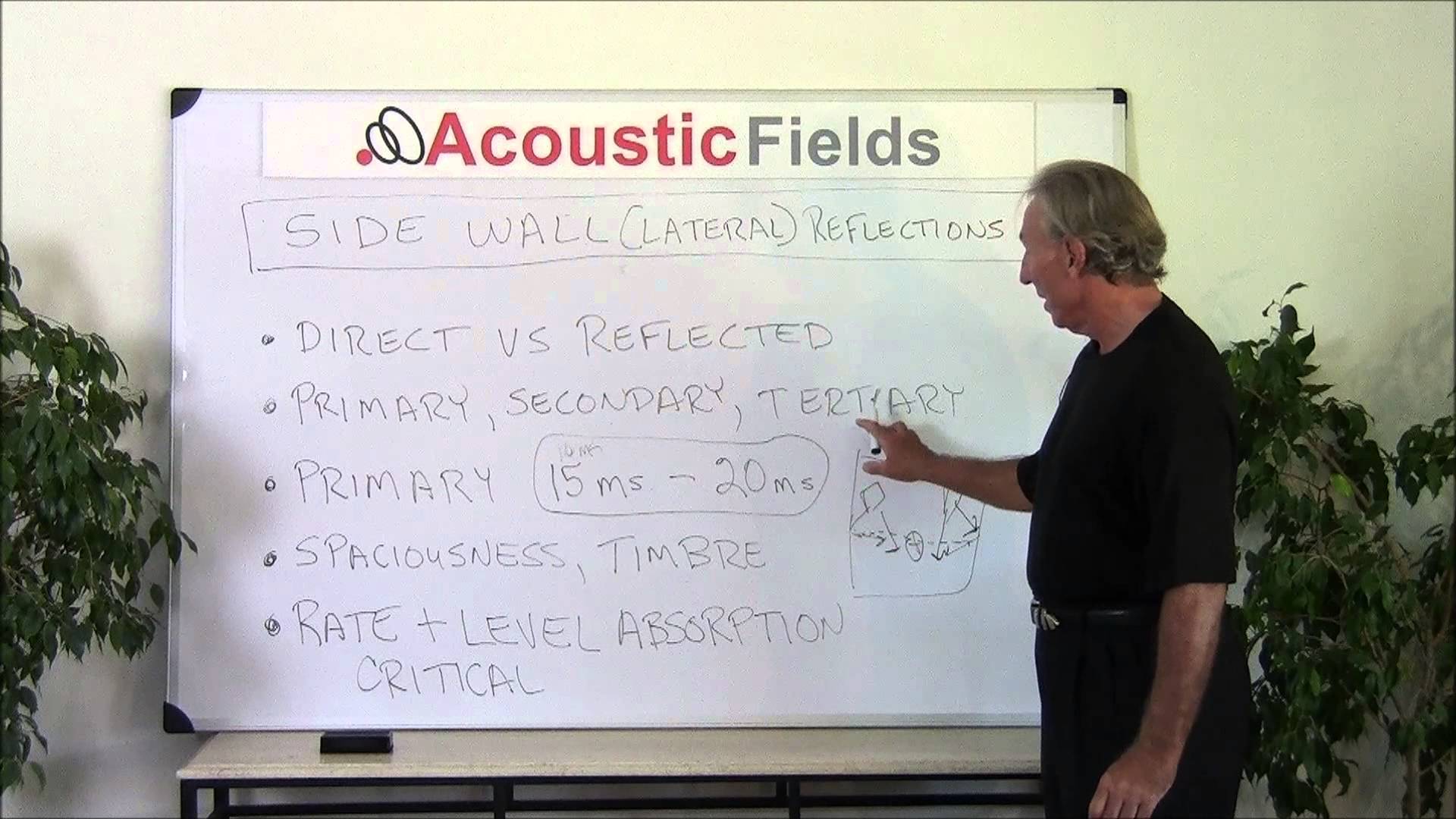Side wall reflections are the most important reflections you encounter at the listening position. They are also the most misunderstood. Look at the side walls in your listening room. Are the left and right channels equidistant from the side walls? Are the side walls made from the same material and more importantly are both side walls treated with the same room acoustic treatment? We have updated this blog to reflect our increase in experience and knowledge on 12/3/19.
Background
To achieve a strong center image presentation, we need to be concerned with two types of energy. We need to focus on the direct energy or straight-line energy from our loudspeakers. The straight line or direct energy from our loudspeakers is the energy that travels in a straight line from our speakers to our ears. It is the sound that has less room sound or distortion in it. This is why engineers sit near the field when monitoring. They want more direct sound than reflected sound. These are reflections from the right side wall and left the side of the wall.
Far-Field vs. Near Field: https://community.sw.siemens.com/s/article/sound-fields-free-versus-diffuse-field-near-versus-far-field
Reflected Energy
Reflected energy from the right side of the walls or the left side of the wall will produce a signal that is delayed in time from the direct or straight-line energy from our loudspeakers. The direct line energy has a certain time signature when measured. It takes x amount of time to travel from the speakers to your ears. The energy that leaves your speakers and strikes the left side of walls or the right side walls will arrive at your ears at a slower time signature because it is traveling a farther distance to your ears. It has to leave your speakers and travel to the right sidewall and then leave your speaker and travel to the left side of the wall.

First Order Reflections
If you are absorbing energy to manage the reflections from your sidewalls, what are that material’s rate and level of absorption? Do you have the same material and the same rate and level of absorption on the opposite side wall? If you are using diffusion technology to manage reflections from the side walls are you using the same technology on both side walls? All of these questions need to be asked as they help to explain why side wall reflections are so critical and why you have no choice when it comes to their proper management.

Sound Triangle
So in this video, I explain why side wall reflections are important and how to correct management of them can improve your musical sound stage and presentation. I also discuss their relationship to direct sound and the time delay signature you need to follow when balancing side wall reflections with the direct sound from your loudspeakers.
Side Wall Reflections and The Direct Sound From Your Speakers
Sidewall reflections and the direct sound from your speakers must mix together to form the correct balance between direct and room sound. Direct sound is that straight line sound that leaves your speaker and travels to your ears in a straight line. Room sound is the reflections in the room reaching the listener’s ears after the direct sound. Reflected sound must be delayed in time below that of the direct sound arrival at the listening position in order to permit the direct sound to dominate just enough. Once the correct direct sound energy balance has been established, you add in-room sound by changing the rate and level of absorption on the sidewall surfaces.
Sound Energy Types: https://en.wikipedia.org/wiki/Sound_energy
Wave And Ray Following
Waves of energy are about sound pressure. They look like ocean waves. They are long and powerful. They move through your room like an ocean of energy. They oscillate at regular intervals just like low-frequency energy within our rooms. Ray’s energy is shorter and smaller. It is the energy of our middle and high frequencies. It is like sunshine. Yes, we have the ocean and the sunlight in our rooms.
If we trace a ray of energy that leaves the right channel speaker and then travels to the right side wall then where it strikes the sidewall for the first time and then heads to the listening position, we have our primary reflection. Once that reflection crosses the listening position, it goes across the room to the left channel sidewall. When it strikes that wall, we have our secondary reflection point. It then travels back across the room and listening position to strike the right channel side wall once again and at that point we have our tertiary reflection.
You have all of these rays moving back and forth across the listening position and trying to mix well with your direct sound which is a sound free of reflections. This mixing and mashing of frequencies must be managed properly if you are to hear everything you need to hear in order to mix and/or to enjoy the best listening experience possible.
Spaciousness And Timbre
Sidewall reflections are so critical because there is so much information in the reflections. It is not literally within the reflection itself, it is in that very small time delay window with the direct sound, which we manage using sound absorption or sound diffusion technologies.
It is that information contained within 5 ms. the window of time and in space. Within that 5ms. time window, we control the amount of spaciousness we here within our sound stage. Increasing the time delay through less reflection management creates more spaciousness within your sound stage. Instruments and vocals are separated and there is a physical distance you can see/hear on your sound stage.
Timbre is a sound character and timbre is in that 5ms. the window right next to spaciousness. Tonal qualities are buried within that 5 ms. the window between direct and first reflections. Finding the correct balance using acoustical treatment is paramount if you want to enjoy a great audio experience.
About Us At Acoustic Fields: https://www.acousticfields.com/about/
In summary
I hope this discussion has helped further your understanding of this critical audio issue. As always if you have any questions at any time I am always on hand to help answer them. Leave them in the comments section or email me at info@acousticfields.com. If you would like to learn more about room acoustics please sign up for my free videos and ebook by joining the mailing list here. I send room tuning tips and things for you to test in your room every Wednesday. They are easy to follow and really help you enjoy more of your music.
Thanks and speak soon
Dennis








hi what mean side wall and end wall? if may show me in picture
thanks
Hi Hse,
Side walls are the walls that are left and right of your speakers. We use these terms in two channel listening environments. The rear wall or “end” wall if you will, is the wall behind the listening position.
Thanks,
Dennis
Hi Dwnis,
What do you think about treating the side reflections by diverting them to the back wall using a plywood panel set to the right angle? Here is example http://www.audiostereo.pl/uploads/monthly_11_2014/post-21737-0-54332800-1417104663_thumb.jpg
Hi Bartek, It is better to build perpendicular and then treat with proper rates and levels of absorption. It is less expensive from a material and build perspective and more predictable and consistent when it comes to reflection management.
Sir , Great Learning of ACOUSTIC for sound lovers. One question I am planning to build home theaters with metal roof and all side wooden ply panels. Is that right way as usually in India we have cement walls. Any sound loss in wooden walls and ceiling? Eager to hear answer as early as possible. Or shall I used any material like rexine used in seat covers or metal panels . I prefer wooden ply frame designs wall. Please suggest… I shall be grateful to you.
P, Without knowing the frequency and amplitude of the noise you are trying to reduce the transmission of, I have no idea what materials will work for your application. Concrete has the density and mass to reduce transmission of lower frequencies. Wood frame can also manage low-frequency energy if designed properly.